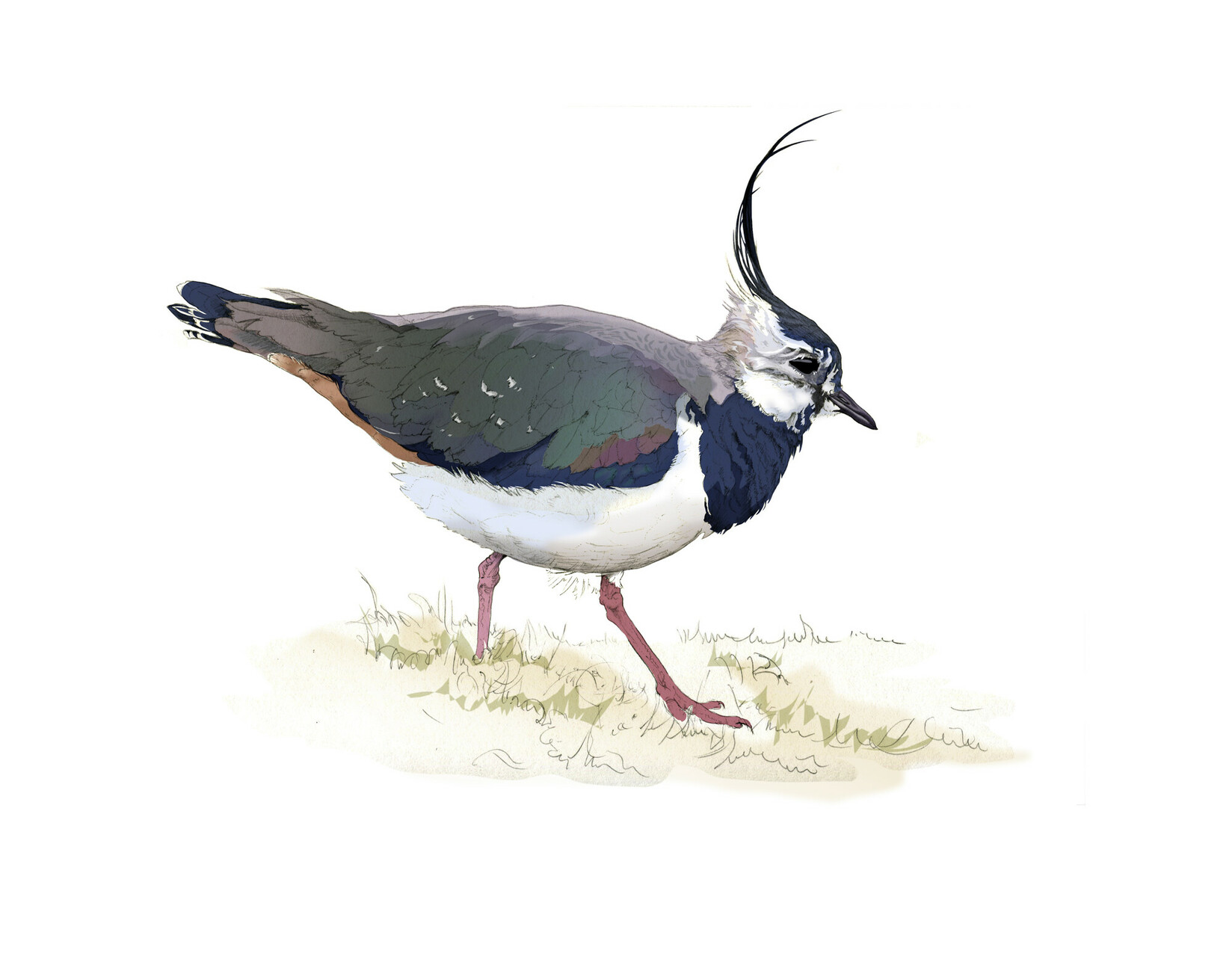
Vanellus vanellus
Farmland, moorland, grassland, marshes and estuaries. Lapwing prefer open areas where the vegetation is short so that they can see predators coming and peck about in the soil to catch insects and worms.
Lapwings are easy to spot, with shiny green feathers on top, large black and white wings and a wispy green crest on top of the head. When the male is attracting a female he shows off with a superb display of diving, twisting and turning in the air. The call of the lapwing sounds like ‘peeee-wit’. This gives them their other name of peewit and in some areas they are also known as green plovers.
Lapwings feed mainly on insects and their larvae, and worms and spiders, although they also eat a small amount of seeds and cereal grains. The short, straight beak is well adapted for this diet – they often tap their feet on the ground to attract prey. Lapwings start pairing up in late March. The female usually lays 3 or 4 eggs in a nest on the ground. The male defends the nest site fiercely. When the chicks hatch they can run almost immediately and soon learn to feed themselves. At the end of the breeding season lapwings group together to form flocks of a few hundred or even a few thousand birds. Some fly a short distance to lower, more sheltered ground for the winter. Others migrate further and fly south to France or Spain. Lapwings that have spent the breeding season in northern Europe may spend the winter in Britain, so you could see lapwings all year round in Britain.
In the 19th century the number of lapwings in Britain declined. This was partly because people gathered lapwing eggs for food and partly because farming methods changed, as more walls and hedges were built to make smaller fields. This did not suit the lapwings as well because they prefer open land away from walls and hedges. Although numbers revived during the early 20th century, the population latterly dropped again by almost half following more changes in farming practice. Use of crop pesticides has reduced the numbers of insects for the lapwings to eat, while many farmers now sow crops in the autumn, which means that the following spring the taller crop isn’t a suitable habitat for the lapwing. Improvements in field drainage and the loss of mixed farms has also played a big part.
There are up to 200,000 breeding pairs of lapwing in Britain and it is estimated that around 3,000 pairs nest on moors and farmland in the North York Moors. The National Park Authority works with farmers and land managers to encourage methods of farming that benefit farming and wildlife. You can help look after lapwings by keeping dogs on leads and not getting too close to nest sites.